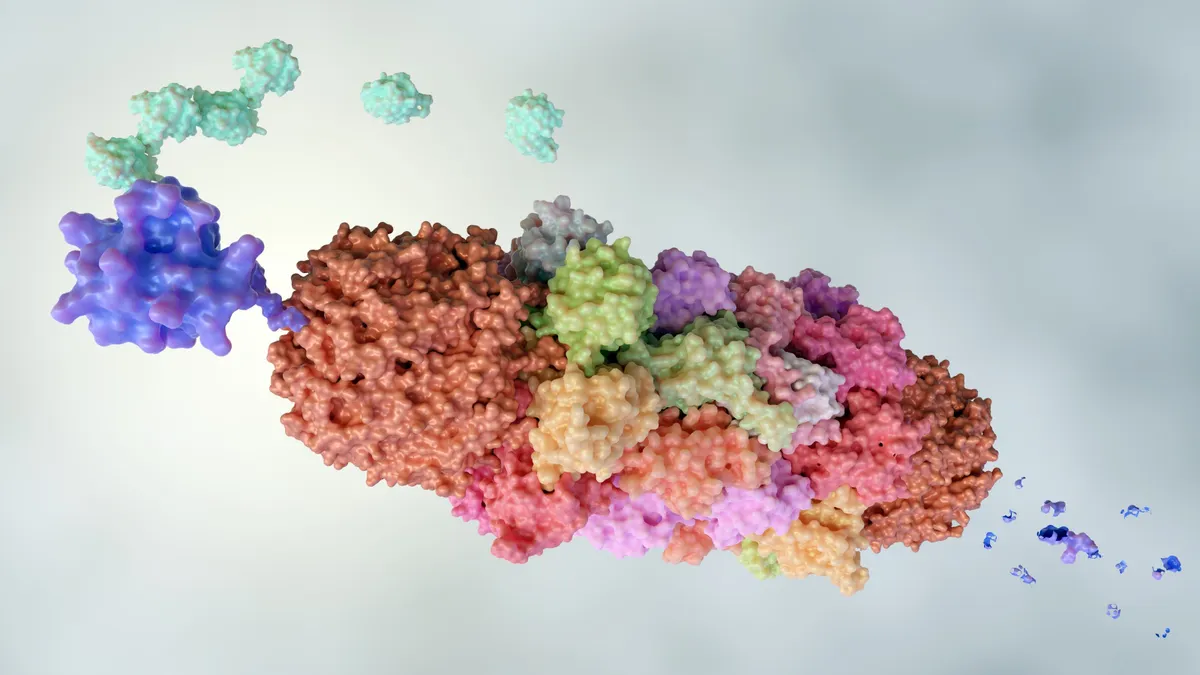Dive Brief:
- An antimalarial drug developed by Novartis could become the first novel treatment for the parasitic infection in more than two decades, following study results that showed it helped cure most people treated with it in a Phase 3 trial.
- According to Novartis, the therapy, known in short as GanLum, was “non-inferior” to standard treatment in a trial evaluating it in 1,688 adults and children. By one analysis, the drug helped clear symptoms and signs of initial infection in 97% of recipients after 28 days, versus 94% among those receiving standard drugs. By another, that cure rate was as high as 99%. Novartis added that treatment appeared effective against drug-resistant parasites and was able to block disease transmission.
- The results cleared the World Health Organization’s 95% target and positions Novartis to seek approvals of GanLum “as soon as possible,” the company said in a statement Wednesday. If so, it would help combat growing resistance to a class of medicines, called “artemisinins,” that have been the gold standard for treating malaria since 1999.
Dive Insight:
There haven’t been any new treatments for malaria for so long, in part, because artemisinin-based drug therapies “have worked so well,” said Sujata Vaidyanathan, the head of Novartis’ Global Health Development unit, at a media briefing.
Yet that effectiveness is beginning to slip. In recent years, the World Health Organization has warned of escalating resistance to these drug cocktails in many African countries. The agency initiated a strategy to respond to the emerging threat in 2022 in an effort to minimize the impact of future spread.
By that time, Novartis had already long been working on a possible solution. Known as ganaplacide, it’s designed to disrupt a protein transport system these parasites need to survive inside red blood cells. That’s important, according to Vaidyanathan, because it enables the drug to work against a broad spectrum of pathogens and at different stages of their life cycles. Attacking them when they’re at a more advanced stage, for example, can thwart transmission.
Novartis has been developing that treatment through a wide-ranging partnership involving the Medicines for Malaria Venture. That work led to a Phase 3 trial testing what’s now known as GanLum, a combination of ganaplacide and a new formulation of the antimalarial lumefantrine.
The study recruited patients at 34 sites across 12 countries in sub-Saharan Africa. Trial volunteers received standard therapy or a once-daily dose of GanLum for three days. The treatment met its main and key secondary goal by proving statistically non-inferior to standard care. Its safety profile was similar to typical therapy, too, though Novartis didn’t provide specifics.
“GanLum could represent the biggest advance in malaria treatment for decades, with high efficacy against multiple forms of the parasite as well as the ability to kill mutant strains that are showing signs of resistance to current medicines,” said Abdoulaye Djimdé, professor of parasitology and mycology at the University of Science, Techniques and Technologies at Bamako, Mali, in a statement provided by Novartis.
At the briefing, Vaidyanathan indicated that Novartis is currently working on regulatory submissions.
“We’ll use the best possible approaches to bring this medicine to patients as quickly as possible,” she said.















